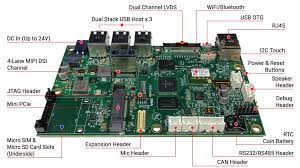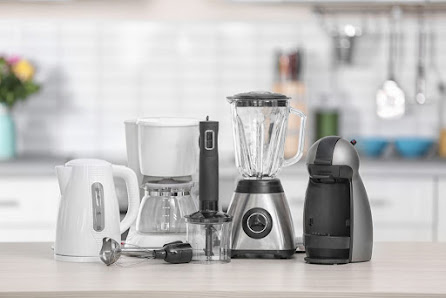The Modern Rules Of Computer Board
Using a flow control valve, the volume flow of air within a pneumatic system can be adjusted and controlled. In the process of adjusting the rate of operation of an actuator, they are frequently employed. Pressure controllers and regulators are in no way comparable to these devices.
What is the precise purpose of a flow valve?
"Flow control valves" or "flow valve" refers to the valves used to regulate fluid flow in hydraulic circuits. The name of these valves reflects their primary function. Flow control valves are available in a wide range of types, each of which corresponds to a particular application.
In the field of hydraulics, flow control
valves are the devices used to regulate the amount of oil sent to various
hydraulic system components. It is possible to control the rotational speed of
a hydraulic motor or the momentum of a cylinder in this manner.
A standard flow control valve, on the other hand, will have an adjustable opening that allows the flow rate to be increased or decreased. Among the many benefits of using flow control valves is the availability of a variety of construction materials, including brass, carbon steel, stainless steel, and zinc.
What function do flow control valves serve
in a system?
Although there are numerous types of flow
controllers, they all function according to the same simple principle.
The rate of airflow through a pipe at a given pressure is reduced proportionally to the size of the hole, also known as an orifice or, more precisely, the pressure differential on either side of the orifice.
Where is the use of flow valve?
Flow valve has multiple applications in
various industries. The following are some of the most common applications:
• Water purification and recycling
• Wastewater treatment and recovery in
industry
• Textile treatment
• Water conveyance
• Manufacturing and processing industry
• Filtration techniques Chemical
manufacturing
• Liquid delivery
• Heat exchangers
• Swimming pools
• Cooling protection for pump
What considerations should I make when selecting a flow control valve?
Before selecting a flow valve, there are numerous factors to consider, including the following:
• The Working Conditions
The work environment is extremely important. The decisions are influenced by the environment. Consider whether the choice of material for the valve's construction was constrained by environmental factors such as temperature or hostile working conditions.
• Operating Stress
Prior to selecting a flow valve, pressure is the second most essential factor to consider. Consider the maximum pressure that can be applied to the system or application while it is in operation.
• Flow Rate Management
Consider the minimum and maximum controllable flow rates a component or process requires. This is relevant to the unit's port size, so it is essential to possess this knowledge. Does the flow require a certain level of precision and accuracy, and does the process repeat?
• Configuration
Should control be applied to the inflow or exhaust cycle when considering a unidirectional valve? Or do you require a valve with bidirectional flow control?
• Connection
Consider the type of network you require. Should it have a threaded or push-in fit? What is compatible with the system's other components.
• Control Procedure
Look for the control method as well. Does the application require a remote method, or can it be adjusted manually?
What types of flow control valves are available?
There are numerous options available to satisfy the aforementioned selection criteria.
• A proportional flow regulator
It has a directly operated spool and a microprocessor-driven position control that provides precise flow regulation. The units provide users with a choice of three valve functions (5/3, 3/2, and 2/2) and three control parameter options (0 to 10V, 4 to 20mA, and -5 to +5V). They provide a high flow rate of up to 5000 l/min while having a low pressure drop.
• Motorized flow regulating valve
In this instance, the method for controlling fluid flow is typically distinct from what was described previously. Two ceramic discs, each with a number of open slots, rotate with respect to one another. Whenever there is a perfect alignment of the open segments, the unit will allow the greatest amount of flow; whenever there is a misalignment, the flow will be restricted until the flow path is completely blocked. Both stepper motors and DC synchronous motors permit precise positioning and, consequently, flow control. The position feedback can be set to either 0 to 20mA or 4 to 20mA.
• Banjo flow regulators
Banjo flow controllers are devices that permit manual adjustment via a knurled nut or a slot for a screwdriver. These units are available in numerous configurations. They can regulate airflow into or out of the system and may be push-in or threaded fittings (exhaust).
• Flow regulators with a solid block construction
Block form flow regulators are manually adjustable devices. According to the user's preference, these units can be mounted on panels or walls and have a high flow performance. The regulator needle is held in place by a cap, preventing it from flying out even if the screw is unscrewed, and its position can be locked. Uni-directional and bi-directional controllers are available.
What are the most common applications of a flow control valve?
Flow control valves are frequently employed to regulate the rate at which pneumatic actuators move. Any procedure that relies on a regulated air flow, especially for the quality of the final product, will require a flow control valve with sufficient levels of precision.
Does a flow control valve require any additional components for proper operation?
Pipework and fittings will be required to complete the system's connection-making process.
Where are flow control valves applicable?
Flow control valves are the devices used in hydraulics to regulate the amount of fluid sent to various components of a hydraulic system. Controlling the rotational speed of a hydraulic motor or the momentum of a cylinder is possible.
How precisely does a flow valve operate?
Flow control valves are capable of regulating the volumetric flow rate of the fluid passing through them. Changing the size of the orifice is the most common method for establishing and modifying the flow rate. This rate can be altered by inserting and removing a needle with a tapered tip from an orifice or by opening and closing the gap in a ball valve.
What are the three most common valve types?
There are three primary types of valves: self-actuated, linear, and rotary. There are numerous types of valves within each of these categories, and each has its own advantages. This training course will concentrate primarily on rotary and linear actuated valves.
What is a paddlewheel flowmeter exactly?
Flowmeters that utilize paddlewheel technology to measure the velocity at which chemicals, water, and other liquids move through pipes.
If the component is installed properly, it is possible to achieve high precision.
These flowmeters are susceptible to the effects of varying viscosities because their readings are taken at the very edge of the flow profile.
Check out this FIP FLS 330tm Flow valve if you are looking for a flow valve. It is based on a paddlewheel. It can be utilized for the measurement of any liquid that does not contain solids.
What advantages do paddle wheel flowmeters offer?
The following are the benefits of using paddle wheel flow meters.
• Cost-effective.
• Extremely accurate.
• Exceptionally high flow rates.
• Dependable and consistent operation.
• Upkeep and maintenance expenses have been reduced.
• Installation is less complicated than with the vast majority of other meterslows.
• Measures flow in both directions concurrently.
• It can accommodate a wide variety of pipe diameters.
Final Reflections:
We hope this has helped you comprehend the
flow valve and its application. It is widely utilized in both industrial and
residential settings.


Comments
Post a Comment